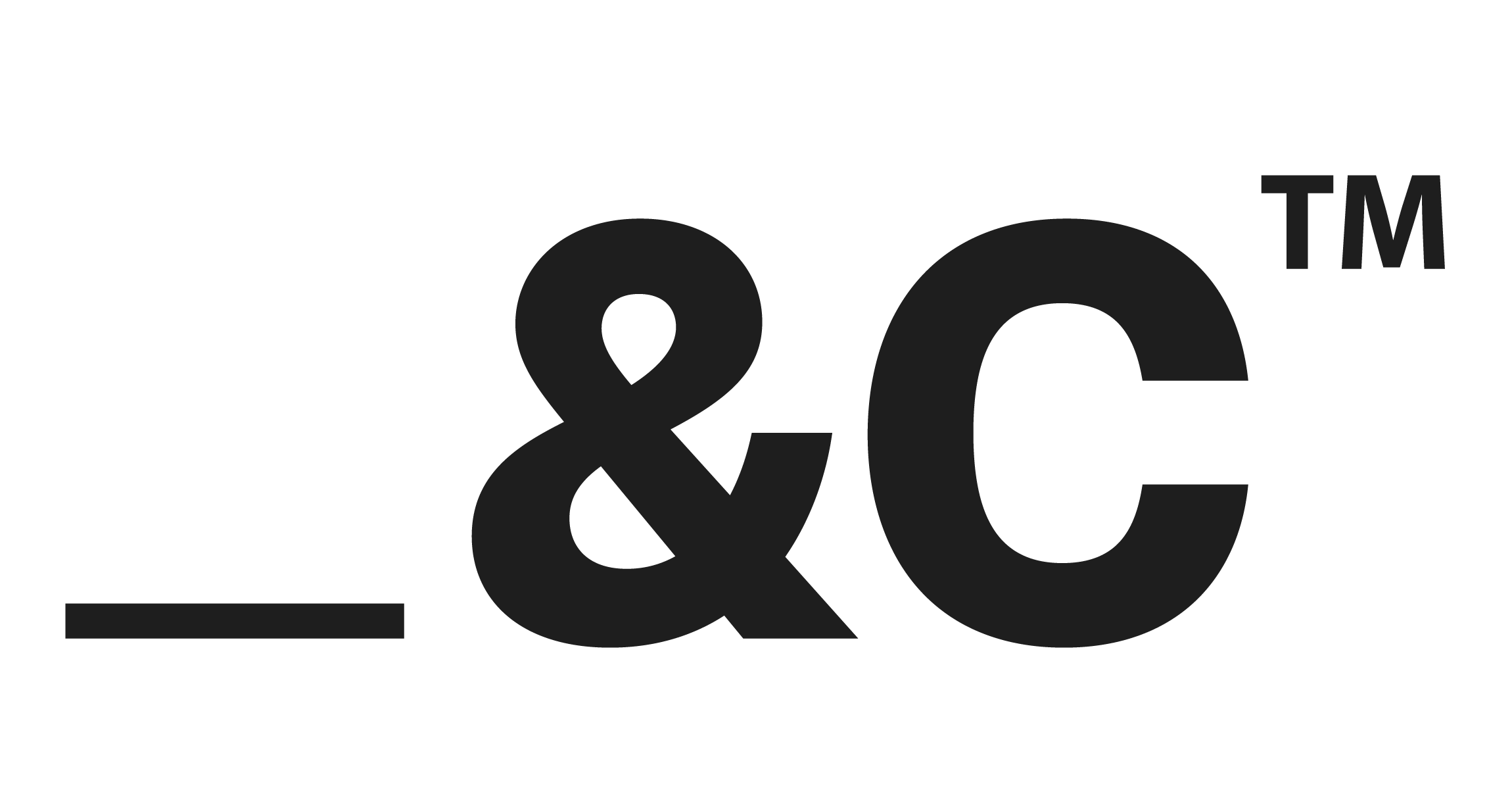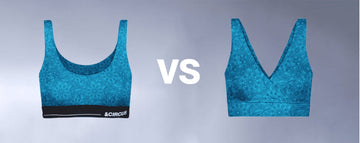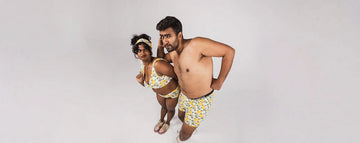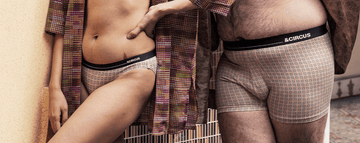A quiet revolution is unfolding one driven not by billboards or glossy ads, but by the flicker of smartphone screens. Video content, from snappy Instagram Reels to in-depth YouTube documentaries, is reshaping how consumers discover eco-friendly fabrics like micromodal, a silky, sustainable material derived from beechwood. It's not just about selling underwear; it's about telling a story of comfort, ethics, and a lighter footprint on the planet. This is the new frontier of sustainable fashion, where moving images are sparking curiosity and driving change.
Uncomfortable underwear shouldn't steal your confidence. At Andcircus, we craft ultra-soft, sustainable Lenzing Modal Micro® innerwear for every body, XS to 5XL. From briefs to bras, our custom packs fit you perfectly. Shop risk-free with our 100% satisfaction guarantee and embrace comfort that includes everyone. #LoveEveryBody. Shop Now!
The Eco-Innerwear Revolution Takes Center Stage
The global sustainable fabrics market is booming, with projections estimating it will hit $74.8 billion by 2032, growing at a compound annual growth rate (CAGR) of 12.5% from 2024 to 2032, according to Market Research Future. Micromodal, prized for its softness and eco-friendly production, is a star player in this shift, especially in innerwear for men, women, and maternity. Unlike synthetic fibers that clog landfills and release microplastics, micromodal is biodegradable and sourced from renewable beechwood, making it a darling of the eco-conscious crowd. But what's fueling this surge in awareness? The answer lies in video a medium that's proving to be as persuasive as it is pervasive.
From TikTok tutorials to YouTube vlogs, video platforms have become the go-to for brands to educate consumers about sustainable choices. Short-form clips on Instagram Reels or TikTok can distill complex ideas like the environmental benefits of organic cotton or micromodal's low-water production into 30 seconds of engaging content. Meanwhile, longer formats, like YouTube documentaries, dive deep into the supply chain, showing viewers the journey from forest to fabric. This visual storytelling isn't just informative; it's emotional, forging a connection that static images or text-heavy websites struggle to match.
Visual Storytelling: A New Era for Sustainable Fashion
The rise of video aligns with a broader cultural shift toward sustainability. Consumers, especially younger ones, are hungry for transparency. They want to know where their clothes come from and how they're made. According to the Geneva Environment Network, the fashion industry accounts for 2-8% of global carbon emissions and is the second-biggest consumer of water. Videos offer a way to confront these stark realities while showcasing solutions. A quick scroll through Instagram reveals eco-conscious influencers slipping into micromodal loungewear, explaining its breathability, or sharing behind-the-scenes looks at ethical factories. These snippets resonate because they feel personal, not preachy.
The numbers back this up. Lucintel reports that the global sustainable fabric market is expected to reach $72.7 billion by 2030, with a CAGR of 10.6% from 2024 to 2030, driven by demand for organic materials like micromodal. The Asia-Pacific region, with its burgeoning textile industry, is leading the charge, holding a 45.8% market share in 2022, per Market Research Future. Brands are tapping into this demand by partnering with influencers who use video to demystify sustainable fabrics. Instead of traditional ads, these collaborations offer authenticity think vloggers touring beechwood forests or designers explaining why micromodal feels like a second skin.
Case Studies: Videos That Move the Needle
Some brands are already mastering this art. Take a maternity innerwear company that launched a YouTube series breaking down micromodal's benefits: softness for sensitive skin, breathability for comfort, and a low environmental impact. Each video, averaging 5 minutes, blends science with storytelling, showing expectant mothers why eco-friendly choices matter. The result? A 20% spike in website traffic and a measurable uptick in sales, according to internal metrics shared by the brand.
On Instagram, a men's innerwear brand collaborated with a lifestyle influencer to create a Reel series. One clip, viewed over 500,000 times, showed the influencer wearing micromodal boxers during a morning workout, praising their flexibility and eco-credentials. The campaign didn't just boost follower count; it drove a 15% sales lift in just two months. Then there's the documentary-style approach: a women's innerwear brand partnered with a filmmaker to produce a 10-minute video tracing micromodal from sustainable forests to finished garments. Posted on YouTube, it garnered 100,000 views and sparked conversations in the comments about ethical fashion. These examples show video's power to inform, engage, and convert.
Challenges: Cutting Through the Noise
But it's not all smooth sailing. Creating compelling video content comes with hurdles. For one, simplifying technical details like micromodal's closed-loop production process without losing accuracy is tricky. Brands must distill complex sustainability facts into bite-sized, viewer-friendly formats. Budget constraints also loom large. Small eco-innerwear brands often lack the resources to compete with fast-fashion giants who dominate ad spaces. According to BCC Research, the sustainable fabrics market is projected to reach $27.8 billion by 2029, with a CAGR of 8.1% from 2024 to 2029, but smaller players struggle to carve out their share.
Then there's the risk of greenwashing. Consumers are savvy; they can spot inauthenticity a mile away. Videos that overpromise or lack transparency like claiming “sustainability” without detailing sourcing can backfire, eroding trust. And in a sea of cat videos and dance challenges, even the best educational content risks getting lost. Viewer fatigue is real, with brands competing for attention in an oversaturated digital landscape.
Opportunities: Building Trust and Driving Sales
Despite these challenges, the opportunities are immense. Videos convert better than static content studies show up to 80% higher engagement rates for video ads versus images. For eco-innerwear brands, this means a chance to tell stories that resonate. A customer testimonial video, for instance, can highlight how micromodal's comfort supports body positivity, while a factory tour can showcase ethical labor practices. These narratives build trust, turning curious viewers into loyal customers.
Videos also boost SEO. A well-optimized YouTube explainer can rank high on Google, driving organic traffic to a brand's site. Add in the circular fashion trend highlighted by the EU's 2023 Strategy for Sustainable and Circular Textiles, as noted by Mintel and videos become even more powerful. Resale platforms like Vinted are gaining traction, and brands can use video to show how durable, biodegradable micromodal fits into this cycle, appealing to cost-conscious, eco-minded consumers.
A Memorable The Future Is Visual
As the sustainable fabrics market grows, video will remain its beating heart. Imagine a future where AR and VR let you “try on” micromodal innerwear virtually, or 3D animations walk you through its eco-friendly production. Industry experts predict these technologies will dominate by 2030, making sustainable choices even more accessible. For now, the key is authenticity. Brands that use video to educate, inspire, and connect not just sell will lead the charge. In a world drowning in textiles (116 million tonnes produced in 2022, per Textile Exchange), video is more than a marketing tool; it's a megaphone for change, urging us to choose fabrics that feel good and do good.
Frequently Asked Questions
How does video content help raise awareness about eco-friendly fabrics?
Video content effectively showcases the benefits of eco-friendly fabrics through storytelling, behind-the-scenes production insights, and real-user testimonials. It captures attention on platforms like Instagram and YouTube, helping consumers connect emotionally with sustainability narratives.
Why are sustainable fashion brands using video marketing more frequently?
Brands are increasingly leveraging video marketing because it personalizes their message, highlights environmental benefits, and visually demonstrates product quality. These videos often feature creators or influencers who explain the eco-conscious choice, making the message more relatable and authentic .
What types of video formats are most effective in promoting sustainable innerwear?
Short-form videos like reels, vlogs, and educational clips tend to perform well, especially when they spotlight comfort, durability, and ethical production. Demonstrations, try-ons, and lifecycle comparisons are also engaging formats that resonate with eco-conscious shoppers .
Disclaimer: The above helpful resources content contains personal opinions and experiences. The information provided is for general knowledge and does not constitute professional advice.
You may also be interested in: Shop Boyshorts for Women Online- Anti-Chafe Toxic Print- &Circus
Uncomfortable underwear shouldn't steal your confidence. At Andcircus, we craft ultra-soft, sustainable Lenzing Modal Micro® innerwear for every body, XS to 5XL. From briefs to bras, our custom packs fit you perfectly. Shop risk-free with our 100% satisfaction guarantee and embrace comfort that includes everyone. #LoveEveryBody. Shop Now!







































